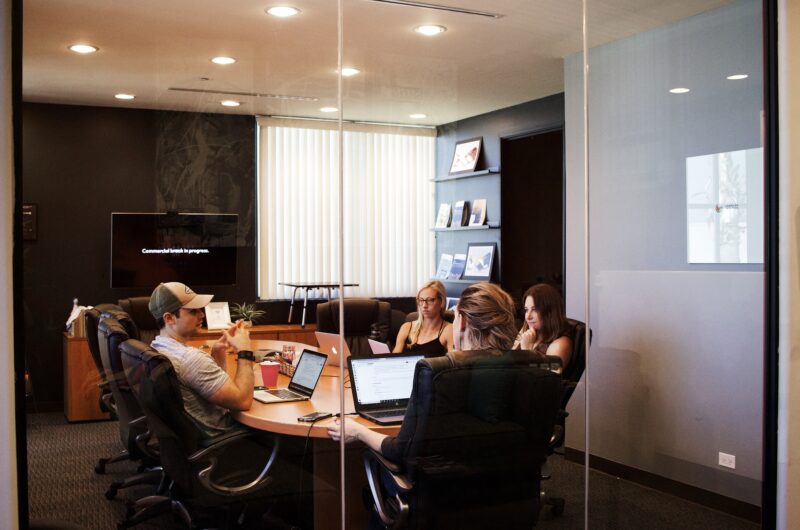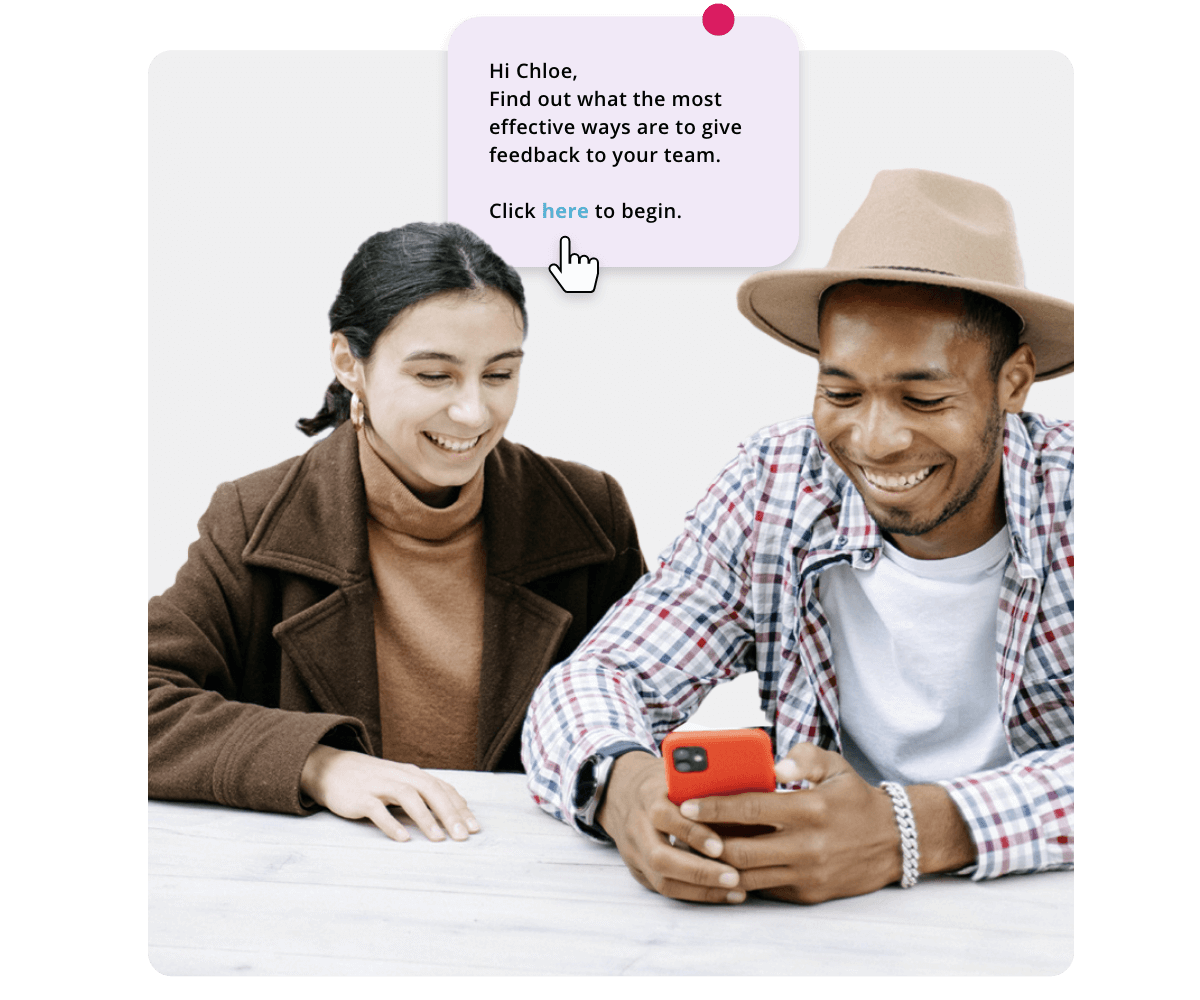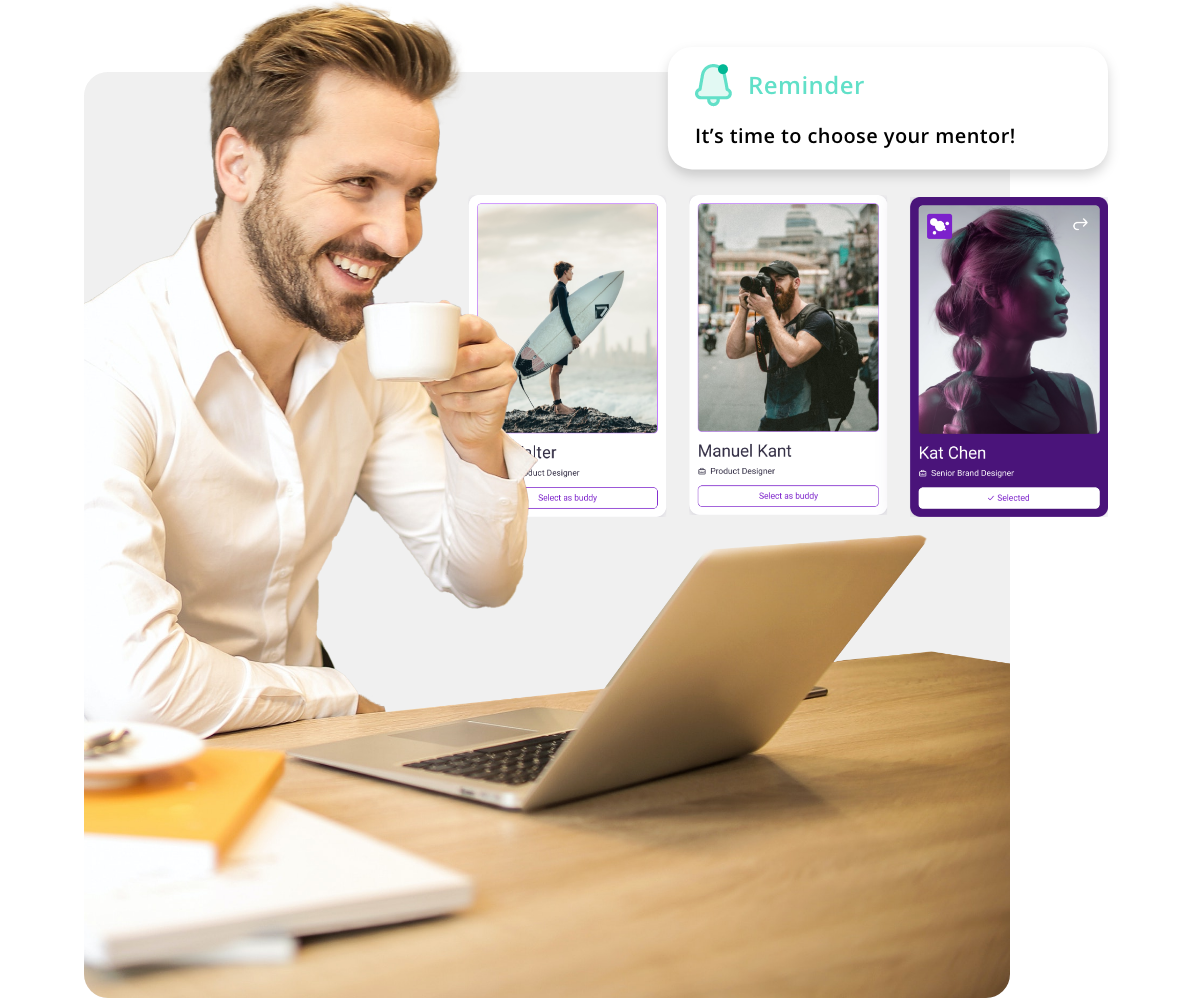12 Internal Development Strategies for the Modern Workplace
Effective onboarding is a huge win. But what are you doing to keep those employees you’re working so hard to bring in? Given the crazy high cost of employee turnover (which we highlighted in our recent post on the cost of onboarding), it’s clear that one of your top goals should be keeping your fantastic new employees around as long as possible.
One crucial aspect of maintaining a “sticky” workplace is creating a place where people can grow. Do your workers see a clear path for career advancement and knowledge enhancement within your organization? Can they learn and develop new skills? A commitment to developing employees not only enhances their satisfaction but also cements their loyalty and drive — ultimately contributing to the overall health and productivity of your company.
And it turns out, all the same infrastructure you use to onboard and train new employees — human connections, engagement, mentoring, learning, feedback — are also fantastic supports for their development.
To learn more about what goes into great internal development strategies, we decided to turn to some specialists in this area. We reached out to four experts with a little Q&A.
We were so jazzed to connect with these thinkers and get their take on what makes internal development click:
- Katie Bray, COO at Flying Cat Marketing, is known for her pragmatic, proactive approach to employee development.
- Ray Slater, Founder of DSLX, is a content and social media expert who brings a wealth of experience in integrating external talent when internal options are exhausted.
- Denise Triba, Chief HR Officer at Ingenovis Health, has 20+ years’ experience in human resources and walks the walk every day at a USD $2 billion staffing company.
- Kraig Kleeman, CEO/Founder of The New Workforce, and Kraig Kleeman Live, renowned for blending visionary business strategies with a little touch of rock and roll.
The fab insights these four came back with really illuminate the strategies and stakes involved in cultivating a thriving internal culture that supports continuous growth and opportunity. Their perspectives offer a balanced view of when to nurture internal talent and when to look outside the organization to fill skill gaps.
What Is Internal Development?

First off, let’s cover definitions. What exactly IS internal development?
Briefly, internal development is an organizational strategy that focuses on nurturing employees’ skills and competencies within the company to prepare them for future roles and responsibilities.
This means getting people in a place where they will be fantastic internal candidates for key opportunities that come up. Nurturing employees helps them to feel they can grow and thrive at your company without needing to bounce to advance. And it’s not only great for enhancing employee engagement and protecting against quiet quitting. It also ensures that the organization can adapt swiftly to changing business needs without the constant need to seek external talent.
Internal vs. External Development
Are you choosing between cultivating internal talent or recruiting externally? Both of these strategies actually have their merits — so they can be used complementarily depending on what you need.
Here’s the difference:
- Internal Development focuses on employee training systems and advancing existing employees within the organization. That means retaining and re-skilling staff to fill new or evolving roles.
- External Development involves bringing new talent (and skills) into the organization from the outside, which can introduce fresh capabilities and perspectives that just might not be available internally — and may take too long to train.
| Aspect | Internal Development | External Development |
| Focus | Enhancing skills of current employees | Bringing in new skills and perspectives |
| Benefits | Improves retention, strengthens culture | Injects new ideas, expands capabilities |
| Cost | Lower, due to reduced recruitment and onboarding expenses | Higher, includes recruitment and initial training costs |
| Time | Quicker implementation as employees are already familiar with the company | Longer adjustment and acclimatization periods |
As Katie Bray notes, the decision to develop internally or hire externally really depends on the situation and how urgent it is to get the new skills in and operational: “There are some tactical hires that you’ll need to make where you need a certain level or specialized skill, and you need it immediately.” At the same time, she notes: “It takes at least three months for a new team member to really settle in and start to feel at home, comfortable, and ready to make an impact in the company. You need to think: strategic roles, growth roles, or a niche skill?”
Ray Slater errs on the side of the internal opportunity, reserving external hires as a last resort — though by no means a consolation prize: “I’d only look for external development opportunities if I was 100% sure no one in my team was interested in progressing into the area we’re lacking,” he says. “After that, externals can bring a heap of benefits. They come with their own experiences and knowledge that can translate well into your business.”
Taking a balanced approach that prioritizes the people you already have ensures that organizations cultivate a loyal and skilled workforce internally. But keeping an eye on your core needs helps you stay open to the perks that external candidates bring to the table.
Benefits of Focusing on Internal Development

So what exactly can you expect from nurturing your team’s growth from within? Let’s unpack some of the benefits of internal development, from cost savings to enhanced employee loyalty.
The Power of Connection
Internal development does more than fill positions; it strengthens the very fabric of your company. Katie observes, “Internal development benefits the company, the individual contributor, and the wider team. There is no doubt that the person is a great addition to the culture and you can continue to build on the foundations that you’ve already set. Internal development increases employee retention by making employees feel valued and given the opportunity to progress and grow.”
Cost Efficiency and Risk Reduction
Hiring externally isn’t just expensive — it’s a gamble. Ray explains, “Bringing someone new is such a high risk, one that may not even pay off if they decide the role or culture isn’t for them. Keeping things in-house eliminates this risk and eradicates onboarding time.”
Boosting Retention and Engagement
When employees see clear development paths within their organization, they’re more likely to stick around. “Internal development increases employee retention by making employees feel valued and given the opportunity to progress and grow,” says Katie.
Challenges in Implementing Internal Development Programs
Of course, every worthwhile journey has its hurdles, and we wouldn’t be playing straight if we didn’t share some of these challenges in internal development. Let’s look at engagement challenges, and some strategies for turning potential pitfalls into stepping stones for success and improving employee engagement — especially around growth.
How do you identify and nurture hidden talents?
The first step can often be the hardest: spotting potential. How do you identify which employees have untapped skills or leadership qualities? It requires a keen eye and a commitment to ongoing engagement and assessment. One way is tapping into the power of your human connections. When you build connections on your team and within your organization — with mentors and buddies — it elevates their ambitions and their emerging skills.
How can you design tailored development program?
Once you’ve identified potential leaders and innovators within your ranks, the next challenge is creating development programs that cater specifically to their needs and career aspirations. This can be resource-intensive and requires a deep understanding of individual career paths and industry requirements. However, one strategy is to make resources available in opt-in development workflows — that let learners take an active role in their own development.
Ensuring equitable access
A common pitfall in internal development programs is ensuring that all employees have equal access to growth opportunities. This involves overcoming biases and setting up transparent, standardized processes that allow every employee a fair chance to develop and advance. Technology can also help here, as it makes resources available universally and ensures consistent journeys and access.
Strategies to Foster Effective Internal Development
Ready to transform potential into performance? Implementing effective internal development strategies can seem daunting, but with the right approach, it’s entirely achievable. From cultivating a culture of continuous improvement to leveraging cutting-edge tools like Enboarder®, let’s break down the top tactics to enrich your team’s growth journey.
1. Cultivate a Culture of Growth and Learning
Ray stresses the importance of making development a part of the daily workflow. “At DSLX, we provide both a budget and time off for personal development. This shows our commitment isn’t just monetary — it’s about genuinely allocating time during work hours for growth.”

2. Identify Potential Leaders From Within
According to Katie, recognizing internal talent for leadership roles is crucial. “Our leadership team is 75% composed of individuals who were developed internally,” she notes, proving the effectiveness of focused development strategies. Denise Triba adds that in her company they use both organic and planned methods for succession planning. “‘Organically’ happens every day in the line of doing work,” she notes. “ As you observe performance you are thinking about the talent you are seeing and how the organization could utilize the skills that are being presented. This allows us to be flexible in how we grow talent and meet the interests of employees. ‘Planned’ is about having intentional conversations around the talent in your organization.”
3. Tailor individual Development Plans
Customized development plans are key. They should address each employee’s specific skills and goals, making the development process relevant and engaging, thereby maximizing the chances of success and satisfaction.
4. Implement a Structured Mentorship Program
Mentorship is a powerful tool. Enboarder can automate the mentor-mentee pairing process, ensuring that employees receive guidance from the right colleagues, enhancing both personal growth and organizational cohesion. (Enboarder is a fantastic vehicle for connecting new and existing employees with mentors, and also connecting people for informal support and buddy systems!)

5. Facilitate Cross-Functional Team Projects
Denise suggests facilitating matrixed and cross-functional teams to help break silos and share expertise. “Project work puts training into practice. Leaders can apply their skills to real work situations that include leading projects, building teams, introducing change, and testing communication skills,” she says.
6. Leverage In-House Training Workshops
Denise stresses the importance of training, both online and in the classroom. “We utilize our LMS and select curriculum to meet the training needs for development. Training is assigned to employees both in a required and optional format. We also provide classroom training to support leadership development,” she says. “Coaching is available for leaders on an as-needed basis. These are often short engagements that help leaders focus on areas that they want to improve and in areas that their leader recommends would help them grow.” Utilize Enboarder to manage and streamline in-house training logistics. This includes scheduling, sending invitations, tracking attendance, and gathering feedback, making the learning experience smooth and effective for all participants.
7. Encourage Self-Directed Learning Initiatives
Promote a learning environment where employees are encouraged to seek out knowledge independently. Enboarder can integrate with various e-learning platforms, making it easy for employees to access a wealth of resources that support their personal and professional growth. (Check out how Bayer used Enboarder to increase the graduation rates on their L&D programs by 27%. 🤓)
8. Promote a Feedback-Rich Environment
Regular feedback is essential. “We conduct quarterly performance reviews, which include 360-degree feedback,” shares Katie. “We gather feedback from two team members – the individual contributor and the manager. We use this as part of a growth conversation and to help identify focus areas to develop and top skills to nurture.” Katie emphasizes the importance of continuous assessment and adaptation — including self-assessment: “This includes the zone of genius exercise where we ask individual contributors to name their zone of excellence (skills they have developed and enjoy doing), their zone of genius (their flow state – something they could do all day every day), their zone of competence (something they can do easily but don’t enjoy), and their zone of incompetence (something they hate doing and aren’t that great at). We use the answers to know which skills we need to develop, which skills not to take someone away from, and which tasks can maybe be delegated to allow room for growth.”
9. Recognizing and Rewarding Growth and Achievement
Celebrating successes is crucial in fostering motivation and acknowledging employee development. Says Kraig Kleeman. “Celebrate the wins. Nothing boosts morale like feeling seen and appreciated. Make sure achievements, big and small, get the spotlight they deserve.”
10. Monitor Metrics and Gauge the Impact of Your Initiatives
Measuring progress and looking at data is essential to staying on track, says Denise, noting that “internal promotions, number of courses completed, training attendee satisfaction, leadership pipeline, employee satisfaction/engagement scores, retention rates are metrics you can use to measure progress.” (Pro Tip: Enboarder offers an advanced dashboard of metrics and insights that can help you understand the success of your outreach and employee engagement with your learning and development opportunities.)
11. Foster a Transparent Career Pathway
Transparency in career progression is essential for internal development. Denise suggests, “having intentional conversations around the talent in your organization. Ingenovis Health does this formally in 1:1 settings during employee performance reviews and at the senior leadership level during our annual organizational talent review.”
12. Create Opportunities for Challenging Assignments
Challenging assignments can significantly contribute to employee growth. Kraig suggests, “Everyone’s different, so why choose a one-size-fits-all plan? Dial into each person’s aspirations and talents to craft growth paths that resonate personally.”
By integrating these strategies into your internal development programs, you can create a dynamic environment that not only supports but actively promotes employee growth, fostering a culture of continuous learning and improvement.
Case Studies: Successful Internal Development in Action

Pretty cool ideas, right? We told you they were smart. Speaking of smart, we have some super smart customers here at Enboarder, who have some equally great ideas about how to integrate new starters and get them on an internal development track right from the jump.
Let’s dive into a couple of real-life examples of how they’re using innovative approaches to foster internal development, getting new hires excited about the opportunities that lie ahead.
Buddying up for Development at TomTom
At TomTom, connecting employees to their team and the larger mission of the company has been pivotal. To help make those connections, Tom Tom introduced a buddy system to integrate new hires into the corporate culture right from the start, creating a sense of belonging and community and making sure people had access to critical information to help them acclimate and grow into their roles. Kelly Nightingale from the L&D team notes, “[With Enboarder], we were able to make sure that we made content that was worth watching and worth reading.” Learn more about TomTom’s strategy.
Mentoring and Just-in-Time Learning at Foxtel
Foxtel takes a structured approach to learning, emphasizing the importance of just-in-time learning and mentorship within the first critical months of employment. “It’s about providing checkpoints for a leader and new starter and the buddy to continuously check in with each other,” Karina Vanderwerf explains. “The content is about access to tools like LinkedIn Learning and information about our workshops, because people want that just-in-time learning.” This human-centric approach helps maintain constant engagement and fosters a supportive learning environment. Discover more about Foxtel’s development journey.
Nudges and Support for Innovation at Sandvik
For a company like Sandvik, innovation isn’t just a buzzword, but a core value deeply embedded in their development strategy. Employees who transition or are promoted into a new role are supported by nudges and content from an Enboarder journey. “It is very much encouraged to be curious and think of ways to continuously improve processes. Enboarder has allowed us to be innovative. It’s allowed people to think more creatively in the business,” says Kylie Cook. Read more about Sandvik’s innovative approach.
Choose the Right Platform to Boost Internal Development
Choosing employee experience software, onboarding solutions, and the right tools and platform for your internal development programs can make a significant difference in the effectiveness and efficiency of those programs. Enboarder’s custom integration tile will be a huge help here — integrating development, training, and learning into the flow of work, minimizing disruptions, and maximizing employee time for actual growth and development. Our solution also connects the humans in your organization for the purposes of mentorship, skills sharing, and career support.
Enboarder’s intuitive design helps ensure your learning and development strategies are more engaging, manageable, and measurable. Our workflows get your initiatives noticed and ensure that your team can focus on what truly matters — growing and excelling in their roles.
Ready to see how Enboarder can transform your internal development strategy and help you build a more resilient and skilled workforce? Book a demo today and take the first step towards a more developed and engaged team.